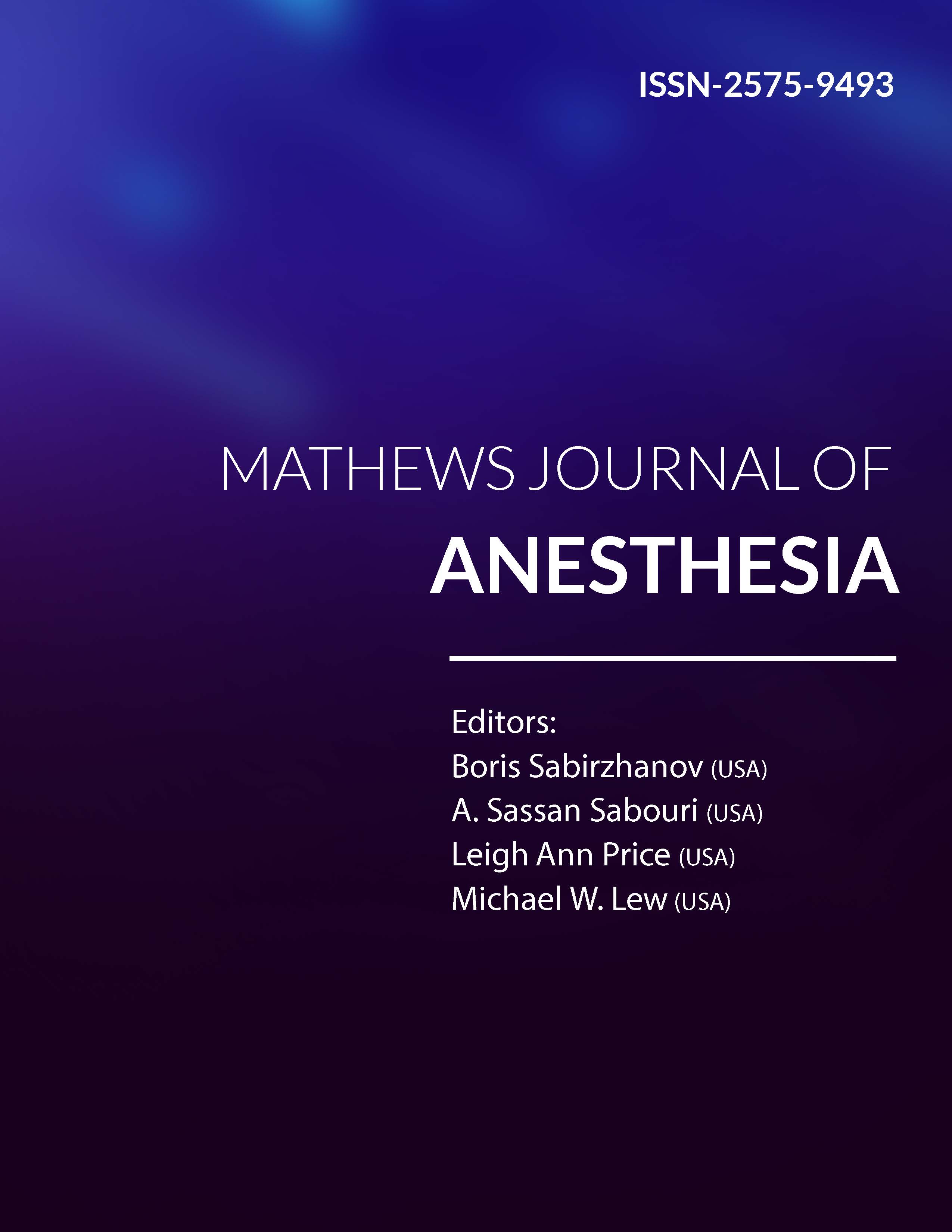
Information Links
Previous Issues Volume 4, Issue 1 - 2023
Prospective General Inhalation Anesthesia for Pediatric Patients Undergoing Radiotherapy. Pilot Project with 25 Children without Venous Access
Luiz Eduardo Imbelloni1,*, Débora Baroni2, Patrícia L Procópio Lara3, Sylvio Valença de Lemos Neto4, Ana Cristina Pinho5, Anna Lúcia Calaça Rivoli6, Geraldo Borges de Morais Filho7
1Senior Researcher of Nacional Cancer Institute (INCA), Rio de Janeiro, RJ, Brazil
2Resident of the 3rd year of Anesthesiology at INCA, Rio de Janeiro, RJ, Brazil
3Anesthesiologist at the National Cancer Institute (INCA), Rio de Janeiro, RJ, Brazil
4Anesthesiologist at the National Cancer Institute (INCA), Responsible for the CET-SBA of the National Cancer Institute, Rio de Janeiro, RJ, Brazil
5Anesthesiologist at the National Cancer Institute (INCA), Co-Responsible for the CET-SBA of the National Cancer Institute, Rio de Janeiro, RJ, Brazil
6Anesthesiologist at the National Cancer Institute (INCA), Responsible Coreme Residence INCA
7Master in Labour Economics, UFPB, João Pessoa-PB, Brazil & Statistician of the Complexo Hospitalar Mangabeira, João Pessoa-PB, Brazil
*Corresponding author: Luiz Eduardo Imbelloni, MD, PhD, Senior Researcher of Nacional Cancer Institute (INCA), Av. Epitácio Pessoa, 2356/203-Lagoa, 22411-072-Rio de Janeiro, RJ, Brazil, Tel: + 55.11.99429-3637, ORCID ID: 0000-0003-3808-5858; Emails: [email protected]; [email protected].
Received Date: March 17, 2023
Published Date: March 28, 2023
Citation: Imbelloni LE, et al. (2023). Prospective General Inhalation Anesthesia for Pediatric Patients Undergoing Radiotherapy. Pilot Project with 25 Children without Venous Access. Mathews J Anesth. 4(1):11.
Copyrights: Imbelloni LE, et al. © (2023).
ABSTRACT
Background: Radiation therapy is a cornerstone in the treatment of cancer in children. Although painless, there is a requirement for the child to lie still by themselves in the radiation treatment room. Most RT services use intravenous sedation or anesthesia. The aim of the study was to describe the technique of inhalational anesthesia with sevoflurane without venoclysis for general anesthesia during RT from January to December 2022, as a pilot project in 25 children. Methods: It is an observational, descriptive, and prospective study of a series of cases. Pediatric patients aged 2 to 13 years diagnosed with cancer, underwent RT under sevoflurane anesthesia without venous access. RT is performed five days a week, with only Tuesdays selected, with the same anesthesiologist and anesthesia resident. patients were monitored with a cardioscope, pulse oximetry, capnography, and gas analyzer. During the procedure, the following were evaluated: the expired fraction of sevoflurane and the corresponding Minimum Alveolar Concentration (MAC) for induction and maintenance, anesthesia and awakening time, place and time of irradiation, and immediate and late adverse effects (after awakening until discharge hospital). Finally, the time of hospital discharge and complications were evaluated after completion. Results: A total of 25 patients diagnosed with cancer and receiving radiotherapy were studied. No difference was observed between genders, with 96% of children between 2 and 8 years old, and 60% being 4 and 5-year-old children. Sevoflurane was administered to 100.0% of patients in all treatment sessions. Mean anesthesia time was 22.96 minutes, mean irradiation time was 10.84 minutes, and mean awakening time was 6.12 minutes. Side effects were more frequent when they reached values greater than or equal to 1.5 MAC. Conclusions: In pediatric patients diagnosed with cancer, the use of sedation and anesthesia during radiotherapy treatment was required mainly in young children. Sevoflurane as monotherapy without venous access turned out to have no severe complications, however, sevoflurane MAC increases above 1.5 were associated with the onset of complications. The awakening was quick (6 minutes) as well as the discharge for residence (19 minutes).
Keywords: Radiotherapy, Pediatric, Oncology treatment, Sevoflurane, Inhalation Anesthesia.